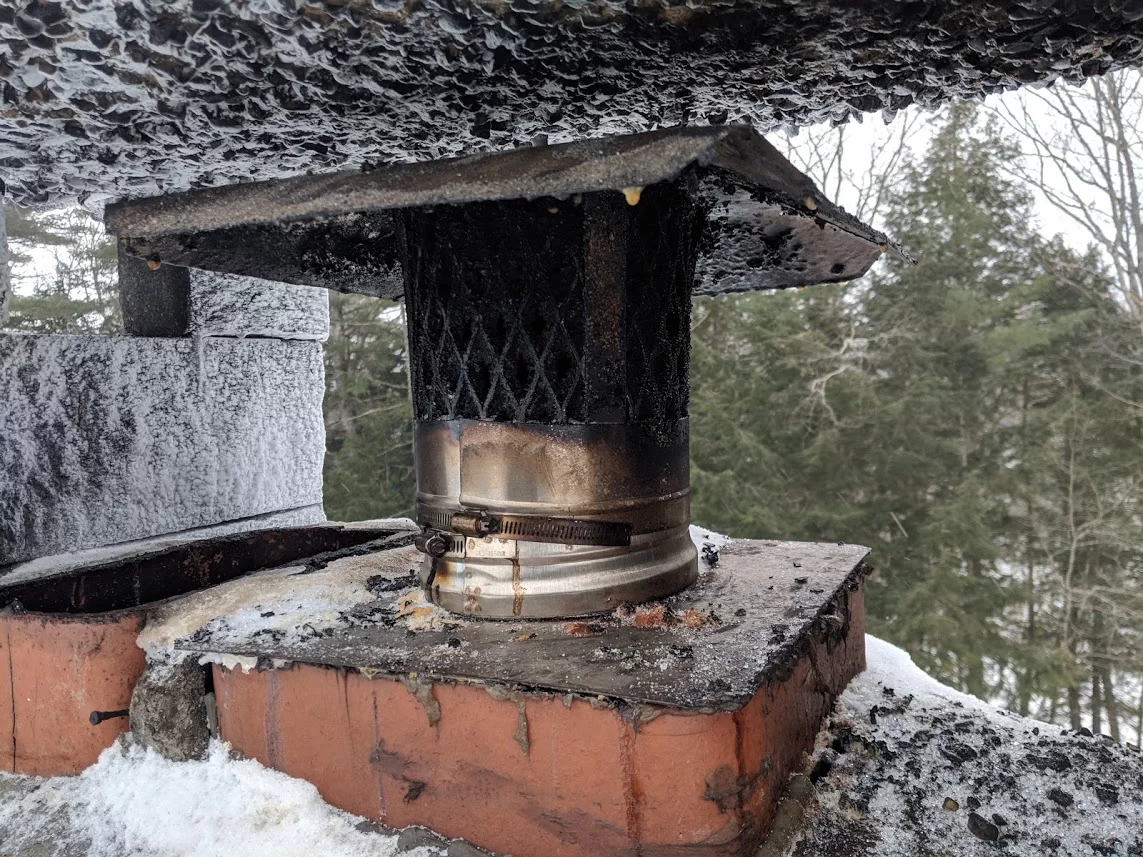I have a Jotul C450 insert. It's in an external chimney, and we just had the stove inspected with a new liner installed a year or two ago. We had the chimney cleaned just a month ago (early December), with no problems reported..
The stove has generally been great since we bought the house about three years ago. We can get a nice, hot fire going with great strong flames. However, starting just a day or two ago, the fires have not been burning well at all. There is smoke in the stove, which billows out into the house any time the stove door gets opened. The only way I can get it to burn decently is to leave the door cracked just slightly, so something is clearly wrong and has changed pretty much overnight. (Don't worry, I'm not leaving the door open for long)
This morning, I heard a slight bit of crackling like something was falling down the pipe; internet searching suggested this could be creosote, but we just had the chimney cleaned, literally last month. If it's worth anything, my wife said she saw sparks coming out the back of the stove, but that was weeks ago and was an isolated incident.
I talked to my stove installer today, and they thought it was wet wood. While I'm realizing my wood is not as seasoned as I thought it was, I'm not convinced this is the culprit since this problem came up overnight.
In the morning, I'm planning to clear out all the ashes, and shopvac as much as I can. Wondering if it's somehow a backed up air intake??? At this point, I have no other ideas. I would gladly welcome any suggestions!
The stove has generally been great since we bought the house about three years ago. We can get a nice, hot fire going with great strong flames. However, starting just a day or two ago, the fires have not been burning well at all. There is smoke in the stove, which billows out into the house any time the stove door gets opened. The only way I can get it to burn decently is to leave the door cracked just slightly, so something is clearly wrong and has changed pretty much overnight. (Don't worry, I'm not leaving the door open for long)
This morning, I heard a slight bit of crackling like something was falling down the pipe; internet searching suggested this could be creosote, but we just had the chimney cleaned, literally last month. If it's worth anything, my wife said she saw sparks coming out the back of the stove, but that was weeks ago and was an isolated incident.
I talked to my stove installer today, and they thought it was wet wood. While I'm realizing my wood is not as seasoned as I thought it was, I'm not convinced this is the culprit since this problem came up overnight.
In the morning, I'm planning to clear out all the ashes, and shopvac as much as I can. Wondering if it's somehow a backed up air intake??? At this point, I have no other ideas. I would gladly welcome any suggestions!


 ) and confirmed that the screen was in terrible shape. Covered in black stuff, and unable to see through the screen. I took the cap off, scraped off the crud to get it nice and clean. I took a peak down the chimney, and didn't see much creosote. There was a thin bit I could see at the top, just a slight, spotty coating. I'll post some pictures once the mods approve. But in the meantime, the fire is burning great! Thank you so much for the advice.
) and confirmed that the screen was in terrible shape. Covered in black stuff, and unable to see through the screen. I took the cap off, scraped off the crud to get it nice and clean. I took a peak down the chimney, and didn't see much creosote. There was a thin bit I could see at the top, just a slight, spotty coating. I'll post some pictures once the mods approve. But in the meantime, the fire is burning great! Thank you so much for the advice.
